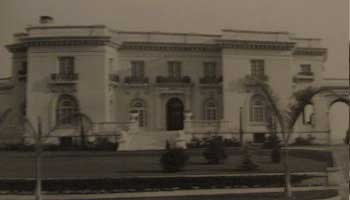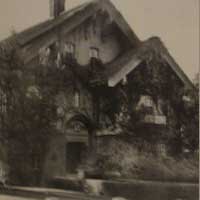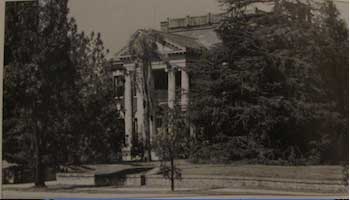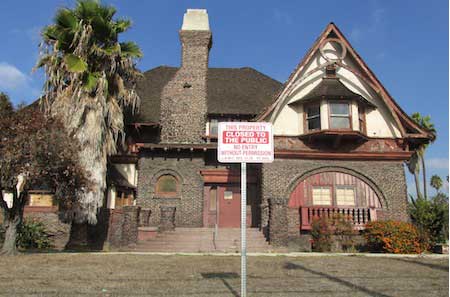
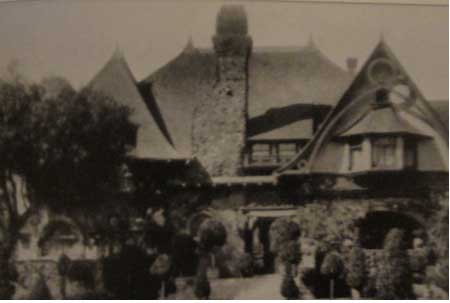
Then and now
The Fitzgerald house at 3115 Adams Blvd.
The Museum of African American Arts is keeping art alive and is helping other non-profits do the same.
How the South Seas House transformed from a vandalized afterthought to a pristine community center in the West Adams District.
Members of the Crenshaw community are hoping to restore the Leslie N. Shaw Park, and residents talk about their hopes for the park.
An iron gate, worn-down exterior and posted warning signs give one building on Adams Boulevard the eerie feeling of a haunted house.
When it was built nearly a century ago, the house was one of the grandest homes on the block where music store mogul James T. Fitzgerald lived.
Now the house needs extensive work, from refinished floors to a brand new kitchen. The total cost for all the work is estimated at $750,000 according to real estate agent David Spangler.
The current owner, an investor who acquired the home through a foreclosure, would prefer to sell than undertake the potentially years-long project of restoration.
This house is not just any house. It is a Historic-Cultural Monument. This means the building holds a significant piece of history for the city, enough for Los Angeles to require its preservation. Any alterations need approval from the Cultural Heritage Commission.
The Fitzgerald house is just one of the many homes in West Adams protected under this ordinance. Other Historic-Cultural Monuments include the Britt, Guasti and MacGowan residences.
“West Adams contains a remarkable collection of homes that reflect the evolution of Los Angeles architecture in the early 20th century,” said Jessica Hodgdon, spokesperson for Los Angeles Conservancy. “It’s important to preserve the unique character that attracts people to historic neighborhoods in the first place.”
These homes are all part of a Historic Preservation Overlay Zone, or HPOZ, an area in Los Angeles with cultural, architectural or historic significance.
HPOZs protect a range of houses, from big mansions like the Fitzgerald residence that are Historic-Cultural Monuments to modest family homes which are considered contributing features to an HPOZ.
Historic-Cultural monuments have stricter regulations for restoration. All changes to the exterior and interior need approval. Contributing feature houses only have restrictions placed on changing the exterior, but none on the interior.
Shannon Ryan currently oversees the Jefferson Park HPOZ, which primarily covers the area between Western Avenue and Seventh Avenue south of Adams Boulevard and north of Jefferson Boulevard. When homeowners in the area want to alter a window or paint the exterior of their home, they must submit a request for a permit through the Office of Historic Resources. Ryan’s job is to ensure that the work being done to these houses preserves their architectural integrity.
“A lot of people appreciate and understand the HPOZ because of the good it’s doing to preserve the neighborhood character and historic fabric of the neighborhood,” Ryan said. “Others who may have already done the work just see us as an obstacle. They feel what they’re doing is improving the value of their home, but often times that differs from the guidelines that the HPOZ requires.”
West Adams homeowner and West Adams Heritage Association president John Patterson is a supporter of this process. He has gone through it himself and believes it serves the greater good of the community.
“The fact that so much of historic West Adams is recognized for its old homes has definitely increased the livability and the desirability of West Adams as a part of Los Angeles,” Patterson said.
Homeowner John Kurtz knows just how intensive the restoration process can be. He spent a full six months restoring his house before moving in almost two decades ago. For Kurtz, the restoration process never really stopped and he is always making improvements. His restored home on 24th Street was named a Historic-Cultural Monument after he restored it.
“It may be frustrating at times for people who come into the area and want to renovate an old house versus restore it,” Kurtz said. “That character is why I moved here and invested my time and my money in the property I own. I want that character preserved. I think the HPOZ is one way of doing it.”
Long-time West Adams resident Tina Williams disagrees. She sees the HPOZ as a nuisance. About five years ago, the Santa Ana winds damaged her attic windows. For nearly three years, she placed plastic over them until she could fix them properly. She finally replaced the wooden windows and painted them to match her house.
Williams thinks this must have attracted the attention of a surveyor in the neighborhood. Soon after, she received a notification in the mail of an HPOZ violation. This came as a shock to Williams who only thought she needed approval if she wanted to change something drastically, not make minor improvements.
She then attended a series of hearings until her case was finally dismissed. To her, the whole process was unnecessary.
“I’m not sure I’m in love with the HPOZ,” Williams said. “I felt that if they were all that concerned about my home, they should have done something when I had the plastic hanging on the window.”
While the HPOZ protects homes so that alterations keep a certain level of architectural integrity, there exists no protocol for dealing with neglected homes. The HPOZ does not require homeowners to maintain upkeep nor does it offer them assistance in restoring their home.
Although the process has its flaws, the end goal has the best interest of the neighborhood in mind. The city’s most-established HPOZ Angelino Heights has prospered thanks to the process, according to Ryan. She sees the same future for Jefferson Park, the city’s newest HPOZ.
“It just helps create a sense of place for a neighborhood and a more consistent neighborhood character,” she said. “It builds pride.”
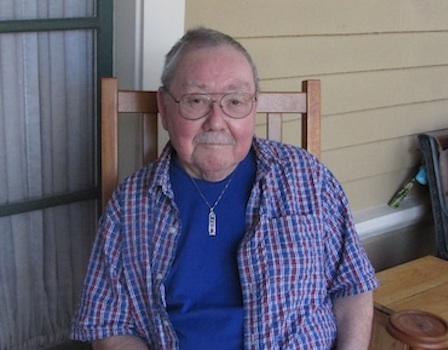
Wally Matsuura | Matsuura has lived in West Adams for over 70 years.
History and Home | Listen to Wally Matsuura, the longest resident on his block, talk about his history and home.
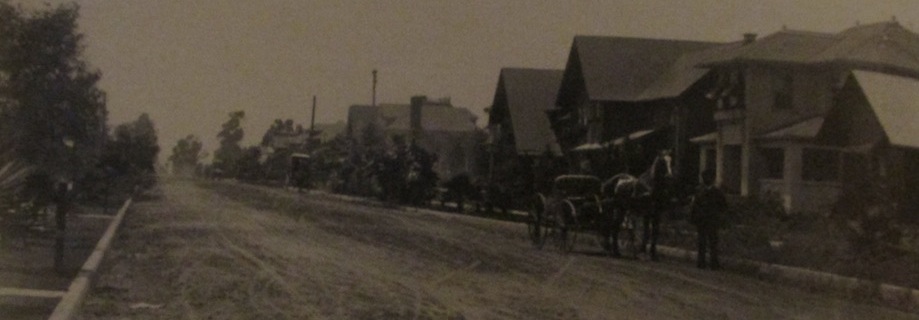
24th Street | The view of Wally Matsuura's street at the beginning of the 20th century.

